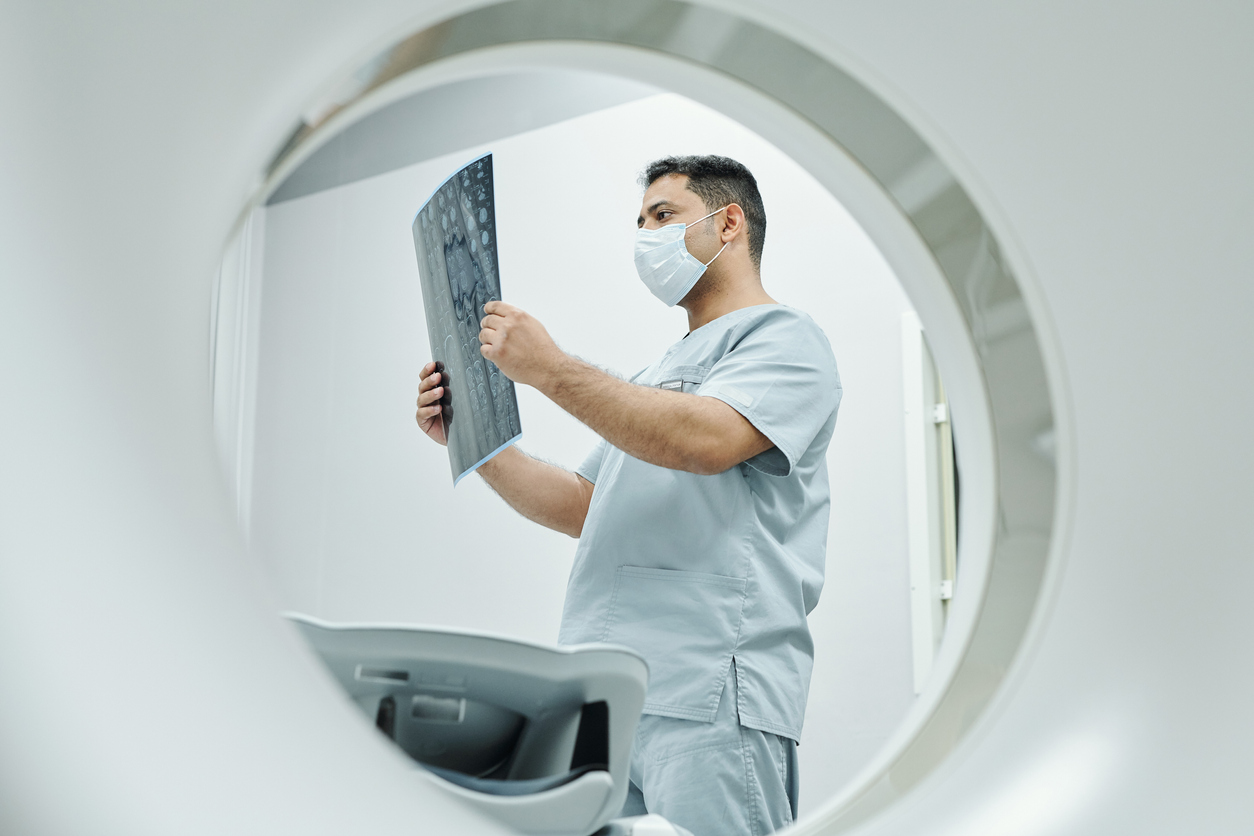
Prostate cancer affects nearly 3 million men living in the U.S. Imaging modalities like CT and nuclear bone scans have shortcomings in detecting more advanced disease. But recently, a game-changing new radioactive tracer was approved by the FDA for use during a PSMA PET/CT scan, which can detect disease that may have been missed on previous scans.
PSMA PET/CT scan, which is located at both Summit Health’s Berkeley Heights and Florham Park campuses and will become available at the new Clifton location in October 2022, helps improve treatment plans in men who are already diagnosed with cancer. In addition, the state-of-the-art imaging modality allows physicians to understand the full extent of disease at diagnosis when cancer recurs.
The new technology is available to New Jersey Urology (NJU) patients as part of the recently formed partnership with Summit Health. So far, nearly 200 patients with prostate cancer have benefited from PSMA PET/CT.
“PSMA PET/CT imaging is a powerful tool,” says John McCormick, MD, a radiologist at Summit Health who specializes in nuclear medicine. “We are detecting more disease than ever before. This advanced form of imaging helps localize prostate cancer in a way that was not previously possible, allowing oncologists to select more targeted therapies.”
The new technology is used in patients who have already been diagnosed with prostate cancer. Nearly one-third of men will experience a recurrence of the disease after treatment. PSMA PET/CT is much more sensitive and specific in picking up on these changes than CT and MRI.
“We have the ability to detect minute amounts of cancer spread that would have been missed before because the tumors were not conspicuous enough to be seen on conventional imaging,” explains Elan Diamond, MD, director of urologic oncology at NJU. “PSMA PET/CT may lead us to come up with treatment plans that have a much higher likelihood of success because we have a better sense of what we are dealing with.”
How does the scan work?
PSMA PET/CT works by using a tracer with a small amount of radioactive dye that contains antibodies to prostate cancer. These antibodies are designed to bind onto the areas that contain prostate cancer cells and cause them to glow on the scan. The tracer dye is administered to the patient through an intravenous (IV) line right before the scan.
“Because of the nature of the dye,” explains Dr. Diamond, “if something glows on a PSMA PET/CT, it is very likely to be prostate cancer and not a benign condition that is producing a false positive result on the scan.”
Advantages of PSMA PET/CT
When compared with traditional imaging modalities like CT, MRI, and nuclear bone scans, PSMA PET/CT is:
- Comprehensive: in addition to the prostate, the scan locates tumors in other organs and areas of the body, including the bones and lymph nodes.
- Specific: the radioactive dye can differentiate between cancerous and healthy cells.
- Sensitive: tumors as small as 2mm can be detected before they are likely to appear on other types of imaging.
Who would benefit from a PSMA PET/CT scan?
PSMA PET/CT is used in patients who are already diagnosed with prostate cancer. This advanced form of imaging is not a screening tool. PSA testing, which measures the level of prostate-specific antigen in the blood, is still the gold standard screening tool for prostate cancer along with rectal exams.
The scan is approved for use in two types of patients:
- People newly diagnosed with prostate cancer who have features that lead the clinician to believe there is a high risk the cancer has already spread.
“A PSMA PET/CT that is positive in this context may lead a provider to recommend against invasive procedures, such as surgery or radiation and avoid medications that would treat the cancer wherever it has spread,” explains Dr. Diamond. “If there are very few areas of spread, a provider may recommend that these spots be treated with radiation.”
- Patients who have a rising PSA after their prostate cancer has been treated with either surgery or radiation. The scan helps doctors determine what next-line treatments would be most beneficial.
PSMA PET/CT can also help predict a patient’s response to a new treatment called Lu-PSMA 617. This treatment uses the same anti-prostate cancer antibodies as the PSMA PET/CT. Instead of using a label that physicians can see on a scanner, the antibody delivers a radioactive particle that can kill cancer cells.
“Lu-PSMA 617 is like a smart bomb against prostate cancer,” explains Dr. Diamond. “When the PSMA PET/CT scan lights up, we know the antibody with the label has found its target. The same antibody with a radioactive particle attached to it will be able to find and deliver the treatment directly to the cancer.”
At this time, PSMA PET/CTs are only approved for imaging in prostate cancer. Further research is ongoing to see if it is useful in other types of cancer.
